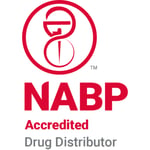For more than 40 years, Safecor Health has been the national leader committed to providing unit-dose repackaging services that allow pharmacists to focus on patient care by outsourcing the challenging and time-consuming tasks of packaging. But we're more than just a repackager - we're a strategic partner here to help you optimize pharmacy operations.
Continue reading →Kristen Barrick
Recent Posts
Get to Know Safecor Health [Infographic]
Posted
on January 30, 2018
Is Your Pharmacy Ready to Meet FDA Unit-Dose Repackaging Guidelines?
Posted
on January 14, 2018
Here’s a checklist to help you determine if your hospital pharmacy would comply with upcoming FDA unit-dose repackaging guidelines.
Do you have stability studies to justify your expiration dating (beyond-use date) on repackaged drugs?
- FDA July 2020 guidance states six months dating (or 25 percent of the remaining manufacturer expiration date, whichever is less) in the absence of a risk-based approach to stability studies for oral solids.
- The FDA has not given any guidance on allowable expiration dating for repackaged oral liquids.
Do you know what class of packaging materials you use?
- USP Class A materials can support one year dating with stability studies.
- USP Class B materials can only support six months dating.
- USP Class D materials can only support 30 days dating.
Does your pharmacy’s unit-dose packaging process comply with cGMP requirements?
- Proposed FDA guidelines ensure packaging and dating consistency regardless of location.
- Cleaning validation to prevent cross-contamination.
- Did you know? Many high-speed oral solid packagers use a common chute resulting in a high chance of cross-contamination among drugs dispensed.
- Packaging materials must comply with FDA guidelines for water vapor and light transmission.
- Canisters in packaging machines should be proven as capable to protect the stability of the product while in storage. Canisters would be considered a container closure system and comply with USP requirements for light resistance.
Do you have a separate quality team overseeing your packaging operation?
If you answered “NO” to any of these questions, here’s what it could mean for your pharmacy:
More packaging. More labor. Shorter dating. More waste. Higher costs.
Proposed changes in pharmacy packaging requirements could have a significant impact on your operations and budget. Shorter dating and more regulations could mean more time spent on packaging, more waste due to shorter dating, more personnel needed for packaging and higher costs.
As the world of hospital pharmacy unit-dose repackaging changes, will you be ready?
Lower your risk. Improve medication safety. Extend your dating. Reduce your waste.
Contact us today to learn how Safecor Health can help.



